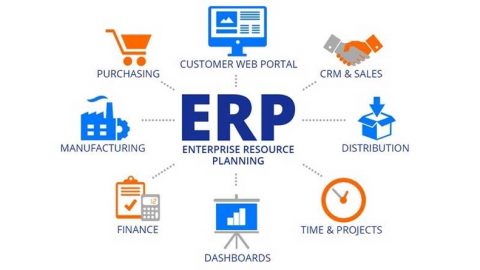
In the previous section, we learned about MES and ERP and the benefits that enterprises can gain by integrating these two software. So if MRP replaces the role of MES, what will businesses achieve?
What’s the Difference Between MES and ERP?
At first glance, the two systems look like they do exactly the same thing, but what’s with the different names? It can be confusing, to say the least.
An ERP is a reporting system to be used, you guessed it, throughout an entire organization. An MES on the other hand, allows companies to track and analyze specific portions of their manufacturing processes.
Both systems monitor processes on a high-level whether it’s from the factory floor to procurement in accounting and lack the ability to provide a deep-dive into the “Why” a specific machine went down or what is happening on the plant floor in the present time. Time for manufacturing analytics to step in because analytics will provide the data an MES and ERP cannot.
Do Manufacturers Need Analytics if They Have ERP, MES, or MRP?
At this point, you realize how inundated the manufacturing software environment is. There is countless software for manufacturing options for creating and implementing a productive and efficient factory, but while the options are great, not all are created equal. Yes, you need to be organized throughout your company, track work orders, monitor materials, monitor the entire manufacturing process and etc., but how do you determine what is working and what is not? The deep dive into analytics is nonexistent.
For that, you need manufacturing analytics to provide, in a simple way, the overview of your manufacturing processes. This includes everything from the health of your machines to the productivity of your people. It isn’t just one metric, but multiple, all feeding into one platform that can help you make data-driven decisions.
The benefit? The addition of manufacturing analytics provides context in understanding why processes are working and why they aren’t on the plant floor.
Manufacturing software can integrate and work together, and then, you are able to fully see a snapshot of what is going on in the plant in the past, in real-time, and in the future. But, sometimes, the best insights come from the simplest of data obtained through analytics.
Source: Sensrtrx